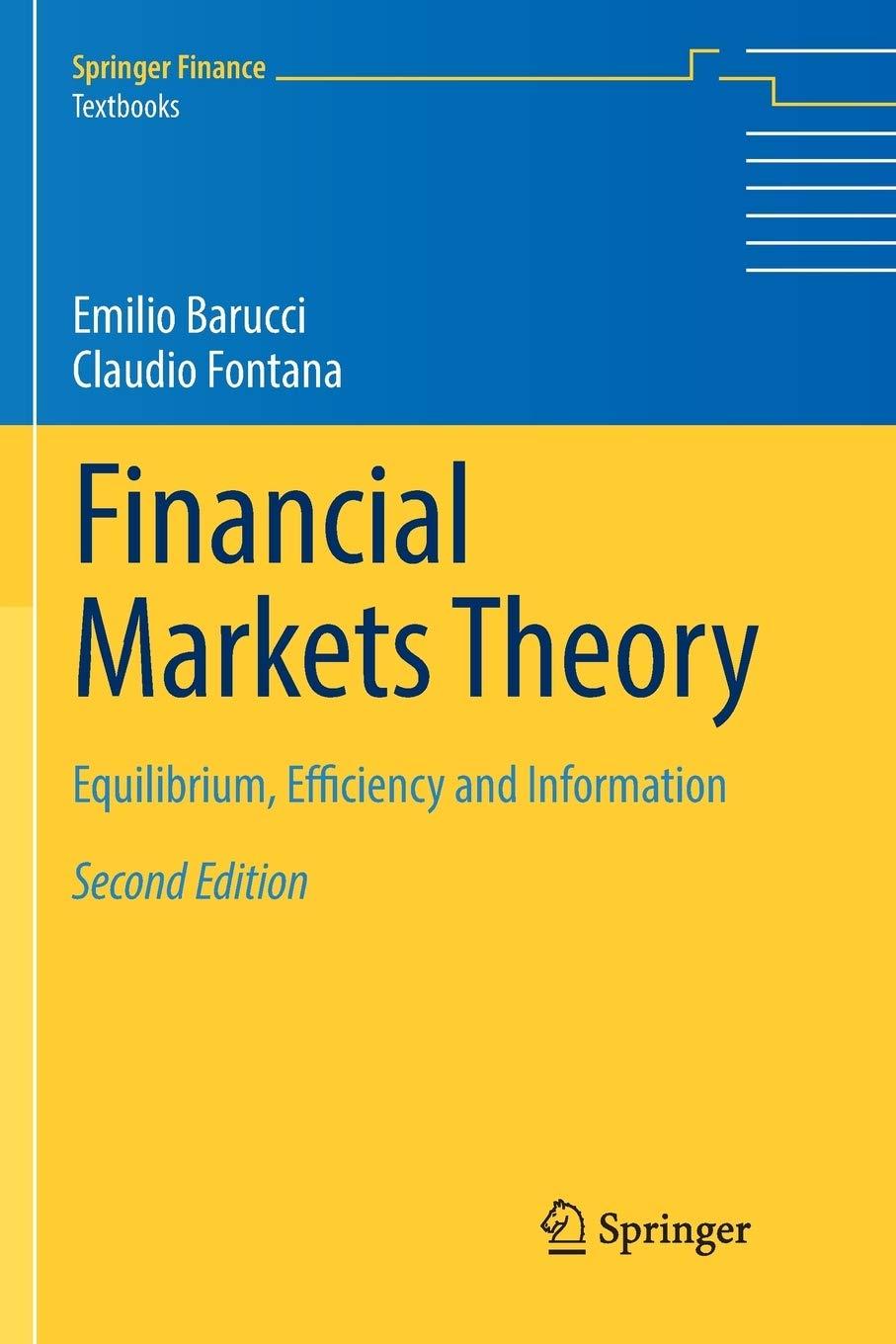Consider a strictly risk averse agent endowed with initial wealth (w_{0}) and with a strictly increasing and
Question:
Consider a strictly risk averse agent endowed with initial wealth \(w_{0}\) and with a strictly increasing and twice differentiable utility function. Let \(r_{f}\) and \(\tilde{r}\) denote the return of the risk free asset and of the risky asset, respectively. Show that the minimum risk premium \(\mathbb{E}\left[\tilde{r}-r_{f}\right]\) of the risky asset required by the agent to invest the totality of his wealth in the risky asset approximatively satisfies the following inequality
\[\mathbb{E}\left[\tilde{r}-r_{f}\right] \geq r_{u}^{a}\left(w_{0} r_{f}\right) w_{0} \mathbb{E}\left[\left(\tilde{r}-r_{f}\right)^{2}\right]\]
Fantastic news! We've Found the answer you've been seeking!
Step by Step Answer:
Related Book For 

Financial Markets Theory Equilibrium Efficiency And Information
ISBN: 9781447174042
2nd Edition
Authors: Emilio Barucci, Claudio Fontana
Question Posted:





